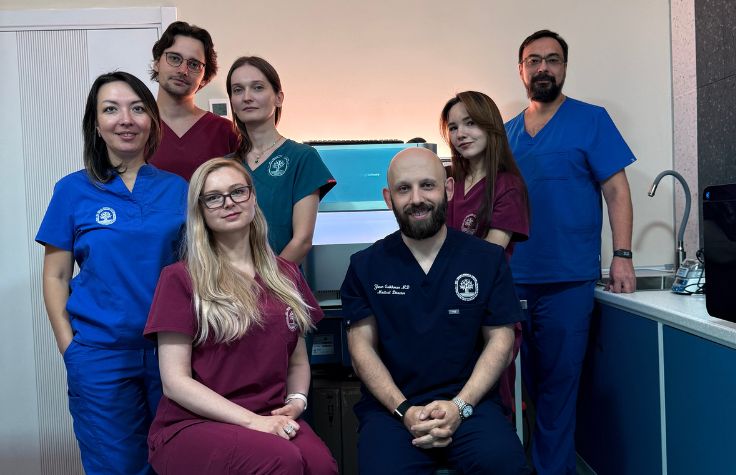
4 October 2024
Cerebral palsy (CP) is the most common motor disability in children, occurring in 1.5 to 2.5 of every 1000 live births worldwide. It’s not one specific condition—rather, the term covers a diverse group of permanent, but not unchanging conditions that can be very unlike one another. Clinical outcomes for CP vary, but it causes impaired movement, balance, and posture, frequently accompanied by comorbidities like cognitive impairment, epilepsy, speech and language conditions, and autism.
Historically, CP was attributed to damage to the brain due to oxygen deprivation, or asphyxia, in the pre- or perinatal period. More than a decade of research of the population-based Australian Cerebral Palsy Biobank (ACPB) cohort, made possible by the increasing power and affordability of high-throughput genome sequencing, has shown that at least a quarter of the individuals in the cohort have an underlying genetic cause, or etiology, for their CP. Importantly, even cases with birth asphyxia and other CP risk factors can have underlying genetic etiology.
Genetic variations explain cerebral palsy with and without known risk factors
Clare van Eyk and Jozef Gecz are molecular geneticists who lead the Australian Collaborative Cerebral Palsy Research Group at the University of Adelaide. Since 2012, their team has amassed genomic and associated metadata on nearly 600 people with CP and their parents.
To enable the most efficient and seamless DNA-to-results analysis on the majority of their ACPB cohort—more than 300 cases—they employed Illumina Emedgene software. “It’s a genuine game-changer for our CP genomics research and generally in our field of genomics of rare disorders,” Gecz reports.
Van Eyk elaborates: “The Emedgene software allowed us to do all the different types of variant analyses on one platform, including mitochondrial variants, copy number variants, structural variants (to a point), and single-nucleotide variants—all in one place, with the addition of AI to help us easily prioritize them.” She adds that Emedgene is excellent at capturing the knowledge of genes that cause disease, because of its continuous updates. “We can’t keep up! On average, a new disease gene has been published every day over the last ten or more years. That’s pretty hard for anyone to keep up with, so Emedgene AI provides a very useful tool to have all that information at one place and at your fingertips.”
Van Eyk and Gecz are now looking to see how this wealth of genomic data correlates with known clinical data—that is, comorbidities like intellectual disability or congenital anomalies, as well as CP risk factors such as preterm birth or asphyxia. Gecz explains, “Knowing the genetic etiology helps us to stratify the cohort and ultimately better understand the interplay between the genetic and other risk factors in the causation of CP. This has major implications for better health pathways for these individuals and their families.”
Their recent authoritative review of the field of CP genomics, published in Nature Reviews Neurology, reflects on the state of the art and the latest developments in the field. CP is arguably part of the neurodevelopmental disability spectrum, overlapping most significantly in its genetic causation with developmental and epileptic encephalopathies. The team also instigated and maintains PanelApp Australia, the only CP gene panel curated by experts, which currently includes reviews for 363 genes reported in the literature to be associated with CP—161 of which are rated as diagnostic grade.
Genetic testing could help patients with cerebral palsy
There’s a brief window of time shortly after birth—called the “critical period for neuroplasticity”—when the developing brain is best able to adapt to injury. As with many other conditions, the faster a child with cerebral palsy is able to receive a diagnosis and intervention, the greater their chance of a better outcome.
Early genetic testing can help paint a clearer picture of etiology, enabling early intervention. Knowing a genetic diagnosis can guide clinicians in their decision making—for example, helping them avoid prescribing medication that could make symptoms worse, which is a risk in certain seizure disorders. It can also help them arrange the right tests and create more tailored rehabilitation therapies.
Tracing CP diagnoses to an inborn genetic cause could also help resolve the uncertainty that families face when they’re told that the condition might have been caused by human error in the delivery room—which has, at times, led some to pursue malpractice litigation. Instead, a genetic diagnosis can help families build support communities, which can advocate for more precise research, share their experiences, and help one another be better prepared for their child’s particular long-term needs.
The Australian Collaborative Cerebral Palsy Research Group is striving to make early genetic testing a routine part of clinical diagnostics. Patients who need genetic testing often face a long wait, and service providers must prioritize them based on greatest need. Gecz explains that, in cases when a patient’s CP is less severe and, for example, an MRI scan seemingly indicates it was caused by an injury, that patient may not be recommended for genetic testing at all, and they could miss out on information that would be critical to their care.
But the data is clear. “Based on our research,” van Eyk says, “at least one in four kids who were told that something else had caused their CP actually had a likely genetic cause.”
She stresses the importance of this research, considering the difficult diagnostic journey children with CP often face: “They’re not that different genetically to other kids with neurodevelopmental disorders, but in many countries, including Australia, they’re not yet routinely considered for genetic testing. And to me, that’s an inequality that needs to be addressed so they have the same opportunities in the medical system as other kids do.” ◆


